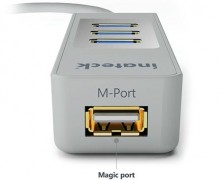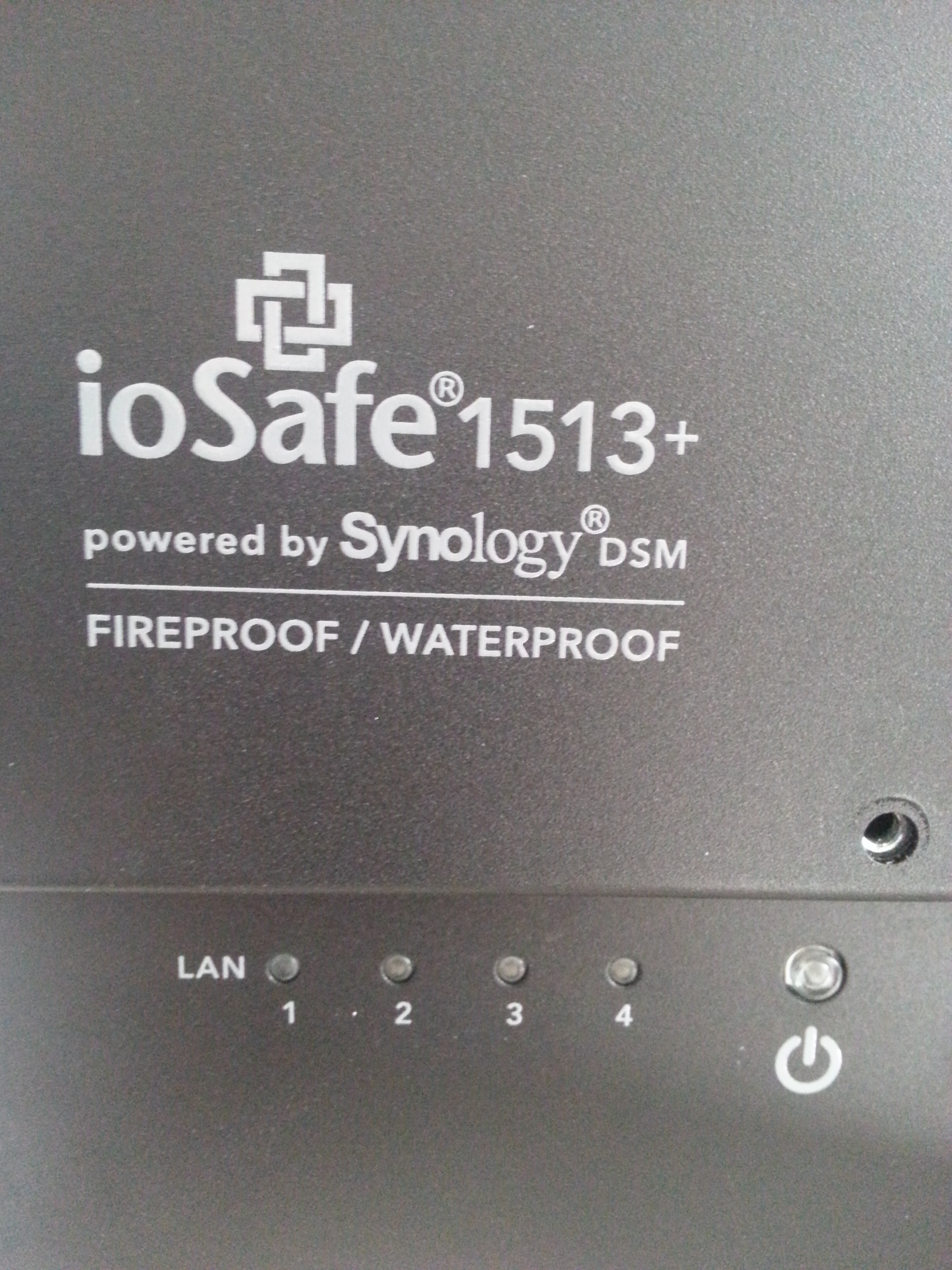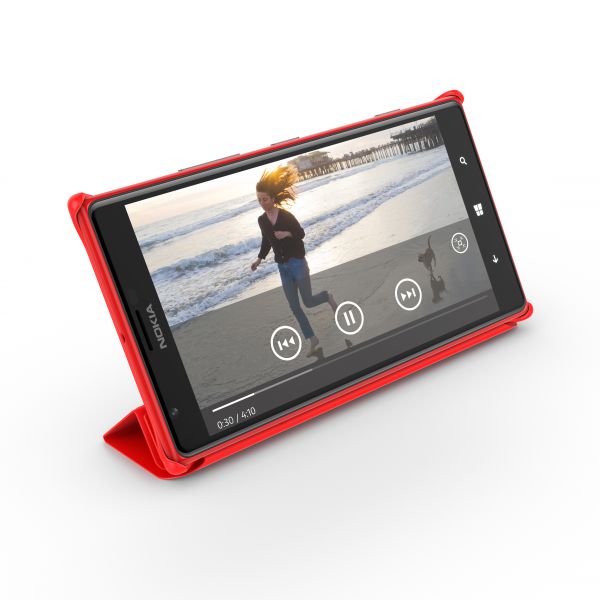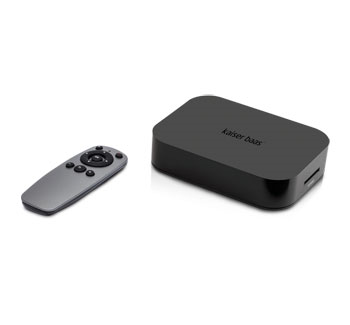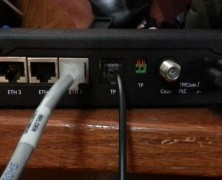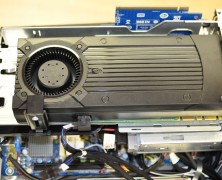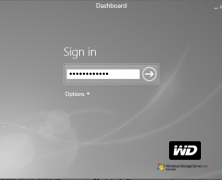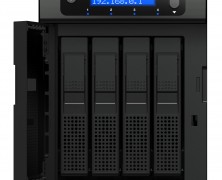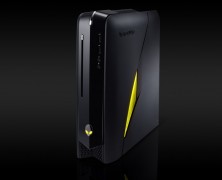Inateck is quickly rising up to become one of my favorite consumer electronics vendors. They make all kinds of relatively generic but still useful gear and they do it well. I last reviewed their FD2002 Dual Bay USB HDD Docking Station and their BP2001 Bluetooth Portable Speaker. Today, we’re taking a look at the HB4009 USB3.0 3-Port Hub +1 Magic-Port. My first thought was “what the hell is a Magic Port?” – Magic and IT are generally considered mutually exclusive, except when considering Clarke’s law: any sufficiently advanced technology is indistinguishable from magic. And perhaps when considering some of the arcane workarounds I’ve seen my colleagues come up with over the years, but that’s a story for another day. For the HB4009, the Magic Port enables cross-platform file transfers and KVM capabilities. The idea is you can connect it to two different PCs, or between your PC and your Android device to use it both as a glorified USB cable and as a KVM switch. It also boasts the ability to share the clipboard between devices and the included Mac KM Link software detects when the mouse reaches the border of any monitor and jumps it over to the other computer. The package comes with the hub itself, with one male USB cable coming out one end, 3 USB 3.0 ports and the magic port on the other end to attach the included male-to-male USB cable. It also includes a USB3.0 to MicroUSB adapter so you can connect the Magic port to your android devices. The USB hub and cable itself is about a foot long, with the male-to-male cable being an additional 3.93 feet. The first thing I tested was to make sure the USB hub actually worked, having minimal success with these things...
Review: ioSafe 1513+
posted by Aaron Milne
My introduction to ioSafe came in the same way that I would imagine a lot of people’s introduction came – with Trevor Pott, Josh Folland and co torching one for The Register. While I could see the point of them, I couldn’t imagine what I would possibly use one for… well until I was asked to review one anyway. So where exactly does one start when reviewing an ioSafe? Well personally, I would have loved to start by drowning it and then maybe playing with a blast chiller. I’d have loved to see how long it could perform while immersed and nearing freezing. Except this isn’t that type of review. Also, given that the unit I’m reviewing is located on the other side of the world, it makes it more than a little difficult. I guess we’ll shelve that idea for now and take a quick look at the “boring” bits that are just as important as destroying a NAS with ice (or so I’m told). The Interface When first logging in to the ioSafe you could be excused for thinking that they’ve pulled a QNAP and blatantly ripped off the look and feel of the Synology DSM. Well, you’d be almost right. The reason the web interface looks and feels like the DSM is because it IS. The ioSafe that I was tasked to review is the 1513+ and it’s powered by the Synology DSM. Finding the Synology DSM on the ioSafe 1513+ is like being reunited with an old friend – if your old friends are well supported, intensely tested and extremely user friendly. To test the user friendliness of the DSM, I tasked my distinctly non-technical office manager with discovering how much space was available on the drives. It took her...
Titanfall – The First Three Months
posted by Josh Folland
Titanfall is a first-person shooter for PC, Xbox One and Xbox 360 that released on March 11, 2014. First revealed at E3 2013, I knew Respawn Entertainment (comprised of many former Infinity Ward members who departed in the exodus during the creation of Modern Warfare 2 and creators of the highly renowned and truly fantastic Call of Duty 4: Modern Warfare) was on to something with their first game. Having waited years for an FPS title to live up to the likes of Call of Duty 4, Quake, Unreal Tournament and many other since come-and-gone games of the genre, Titanfall looked to have that spark that’s been missing for many years. I followed Titanfall closely and got into the PC beta about a day after it began. While it had some problems like flawed Origin integration, downtime (excusable due to it being a beta) and being limited to 60 FPS, I was hooked instantly. Respawn had got it right – they focused on the core gameplay experience. The movement was familiar enough to me, being a combination of Mirror’s Edge parkour-style movement as well as a basis in the traditional sprint-aim-down-sight-duck-for-cover playstyle made popular by the Call of Duty franchise. Once you score enough points and/or the timer reaches zero, you drop your Titan and can climb inside or leave it free to guard or roam the map on its own. Once inside the Titan, gameplay reminded me a lot of Halo. Titans have a shield that will regenerate if you spend enough time out of combat over top of a hull that cannot be repaired, similar to the mechanics in Halo. With a team of friends, we would perform maneuvers such as the “switchout” in which one of us would change places in...
Nokia Lumia 1520
posted by Adam Fowler
On the 11th December 2013, Nokia released its latest Windows Phone in the Lumia range – the 1520. Following up from the Lumia 1020 with its flagship 41 megapixel camera, Nokia went for a different extreme on the 1520 with a 6 inch display. Other impressive specifications include a full HD 1920 x 1080 resolution on the giant display, a 20 megapixel camera (which is still better than most other smartphones on the market), a quad-core processor, and finally a 3400mAh battery. That beefy battery is supposed to provide 32 days standby time, and my heavier real-world use averaged 2 to 3 days between charges. Software-wise, this is the first phone to run Nokia’s “Black” update which will end up being available to all Lumias, so that’s no reason to consider this particular phone. The hardware is what makes it or breaks it, so that’s what this review will focus on. Good Weight wise, it’s not a light phone at 209g. It is much heavier than an iPhone 5S at 115g or a Samsung Galaxy Note 3 at 168g, but I don’t consider it too heavy. The screen is the number one reason I’d recommend this phone. The amount of real estate you get will make you reconsider using a laptop to do lighter tasks, and the large number of tiles you can fit on a single screen means you can glance at your phone and see everything you need to know. The long battery life means that you’re much less worried about charging your phone at every chance you get, which is a refreshing change from most other smartphones. Bad There is only one official case for the 1520, and that’s the CP-623. It’s the standard ‘clip on the corners’ cover that most other...
Kaiser Baas Smart Media Player Review
posted by Adam Fowler
There are not many products that I’ve used and wanted to take back to the shop within minutes of purchasing, but this is one of them. There are many Android Media devices available online, but this was the ONLY one I could find that I could actually buy from a bricks and mortar store – usually a good sign for a product. In this case, I’m baffled at what I bought. The Kaiser Baas Smart Media Player makes some big promises. In Australia, it’s currently exclusive to JB Hifi for $128. Part of me wonders if this is because Kaiser Baas couldn’t convince any other store to sell this product. This may sound harsh, but after using this device for a few hours I’m not sure how it can be actually sold in its current state. I had high hopes for this device. Running Android 4.2, it’s a small box with remote that is supposed to fulfil all of your dreams of media consumption. Taken from their website: Enjoy internet browsing, music, video and picture files in full HD, via your TV. I’ll stop there already, because I didn’t enjoy it. Out the box, I realised it was only working at 720p. I thought that was strange, but wanted to see how it would play videos as that was the main purpose I had in mind for it. It plugged in and worked really easily at first; a minute or so of waiting brought up a very basic menu of options. Choosing the ‘Video’ option took several presses of the buttons on the remote, because it either didn’t register a press or delayed it so much that I was going back and forth over the icons until I eventually landed on ‘Video’. Successfully clicking ‘Video’...
System Mechanic Review
posted by Aaron Milne
System Mechanic will always hold a special place in my heart. I was introduced to it as a technician new to performing services for consumers. We used it to automatically perform all of the tests I’d previously done manually. It was a godsend to me then, but I must admit that I haven’t actually used it for a while. Let’s take a tour of the facilities and see what we’ve got to work with shall we? Features, Error Correction and CRUDD System Mechanic purports to offer more than 50 proven tools and functions utilising patented technology, and it can fix and/or prevent over 27000 PC problems and errors. That’s a lot of features and it’s certainly a lot of possible errors. How do we find and fix those errors? If you guessed with a system scan then yes indeed, you’d be absolutely correct. Opening up System Mechanic we’re presented with the Dashboard Overview. If you look closely you’ll see that it wants to analyse the system to find issues and there are two ways to do that. If we click on “analyse now” then it will automatically run a quick analysis. Clicking the drop down arrow will give us the option of running a deep scan. There’s a very real time difference involved in the two scans though. A quick analysis should take 1-2 minutes, and a deep analysis should take 5-7 minutes. You could run a scan and follow up on its recommendations straight away, but as we’re on tour, let’s have a look at some of the other features before we dive into that. Next up on our whirlwind tour of the System Mechanic landscape is found on the Dashboard overview as well. It’s called ActiveCare and according to the Dashboard...
Devolo dLAN 500 AVPro Uni Switch Review
posted by Josh Folland
The Devolo dLAN 500 AVPro Uni certainly makes for an interesting piece of kit. It’s designed for home or office use, boasting the ability to transmit data over traditional RJ45 gigabit Ethernet as well as wiring already built into most home and office buildings: Coaxial, RJ11, twisted pair and even the power outlets. It also supports a single Power-over-Ethernet port to connect things like IP Cameras where you previously would have needed to modify the building itself to run the cable, at a price point of approximately £210 online. The feature that caught my eye the most was the concept of transmitting network data over the existing power line. In theory, this offers a lot of versatility for home and office applications. By using the already-existing wiring there’s no need to ensure there’s a terminated cable, simply plug one dLAN 500 into the wall in the office space, plug another dLAN 500 into the wall near your modem or router, connect your office systems to the switch and away you go. If I’m not in a position to go run cables through walls and floors (such as renting or leasing the office/home space) for connectivity, this can solve many my networking issues. The added Coaxial, twisted pair and RJ11 are icing on the cake: If placing a dLAN 500 closer to one of these outlets as opposed to power is more convenient or more available, this switch offers that kind of versatility. From a more technical standpoint, Devolo says that over the non-RJ45 lines, we should see transmission rates “up to 500Mbps” and should see ranges up to 600m over Coax, RJ11 and twisted pair. Over power, the range is reduced to 300m – which is understandable given that those lines are traditionally reserved...
Alienware X51 Omnireview
posted by WeBreakTech
WeBreakTech recieved an Alienware X51 for a month’s worth of review. (Sadly, it turned into closer to 2.5 months, sorry Alienware!) We ran the Alienware through every test we could concieve of. We ended up with three different perspectives and a video. Katherine brings a casual gamer’s view of the device while Josh attacks it from the postition of a far more dedicated hardcore gamer. Trevor does what Trevor does best and approaches the situation orthogonally; he’s looking at the unit from a professional standpoint, evaluating it for suitability as a workstation. In all, we were quite impressed. Katherine’s take Completely irrelevant to the performance aspect: the Alienware X51 is sexy. It is all sleek curves and glowing lights like a sports car. (I suspect the analogy that I am supposed to be using here is “spaceship.”) It comes packaged with everything you need except for a monitor and a network cable. Setup is painless. The keyboard is comfortable, though the delete key is in a weird place. I was skeptical of the mouse, which looks a bit like what would happen if Apple discovered black, but it is actually really good. It fits ergonomically in the hand, tracks well, and is precise enough for gaming. I didn’t miss anything about my old mouse except for the weight; the Alienware X51 mouse is light, which may bother some gamers. A minor quibble. I do most of my gaming (and work) on an MSI GT780DX. I really like it, and will cheerfully use it for several more years. However, the Alienware X51 is a clear step up from the MSI in almost every respect. It boots faster, loads apps faster, and has near-instant page loads when browsing the internet. The 1920 x 1200 display makes...
WD Sentinel DX4000 Part 2
posted by Trevor Pott
I’ve got a Western Digital Sentinel DX4000 in the lab to play with. There were a few minor hiccups during install, but overall I’m quite impressed with the unit. What captures the imagination, however, isn’t the unit as shipped, but the unit as it can be configured. When you set up the system you are asked to interact with it through a fairly primitive installable client. Most users will never even know they can RDP into the thing. What’s amusing is that the installable client is in fact an RDP client with no “chrome.” The Dashboard is nothing more than an application running on the NAS’ native Windows Storage Server 2008 R2 Essentials install that is presented to the end user over RDP. The presentation is fairly seamless, it’s easy to miss the Remote Desktop Connection (RDC) client flashing up for a fraction of a second as the dashboard launches. But it’s RDP nonetheless, and you can simply fire up the traditional RDC client and log in with the administrator username and the password configured during initial setup. Voila: one fully functional Windows Server 2008 R2 install. Now for a number of reasons Microsoft does not under any circumstances want you in here mucking about. The most obvious being that you could theoretically install applications or deploy services that it normally reserves for people who buy much more expensive SKUs. They even give you a cute little warning to that effect. What’s behind port 3389? I naturally disregarded this entirely and began mucking about. A few things leap out at me. The first is that Western Digital has done some customizing. There’s a Haali media splitter in here and codecs from Xiph.org. I approve. They’ve also added some teaming software to the...
WD Sentinel DX4000 Part 1
posted by Katherine Gorham
One of the main selling features of the Western Digital Sentinel DX4000 is that it is supposed to be easy to set up and install. But how easy is “easy”? Is it really “plug-and-play”? Could your proverbial Aunt Millie do it? And, most importantly, how many different ways can we break it? More than a few, as it turns out. But don’t hold that against Western Digital; for that you blame this guy. You are unlikely to encounter many hiccups during installation unless you are as obsessively interested in voiding warranties as he is. If it is not done perfectly by-the-book, the setup of the Sentinel DX4000 is not as fast or smooth as advertised. If you do everything according to plan it is certainly within acceptable parameters. Let’s take a look at my experience with the device. Out of the box The DX4000 ships with an ethernet cable, two AC adaptors, and a Quick Install Guide, which is the dead tree version of the pdf found here. The adaptors caused some momentary head scratching. Redundant power supply? Sounds good! The Quick Install Guide says to only plug in one of them. Then a little later, in a contradictory paper insert, it depicts plugging in both. (Aunt Millie furrows her brow in confusion.) I plugged in both. Nothing broke. The ethernet cable is a perfectly nice ethernet cable. It’s also kind of short. Instead of using it, I plugged in a longer cable that was handily lying around the office and which reached to the router from my workstation. Cue ominous music. Setup After you power on the Sentinel DX4000 for the first time, it will run its OS install – which takes a few minutes – and then display an IP address. You...
WorldCard Mobile
posted by Josh Folland
WorldCard Mobile by Penpower Technology Ltd. Is an iOS application that does exactly what it says on the tin: “Business card reader & business card scanner.” In a nutshell, it quickly converts the contact information on a business card to an electronic contact that you can sync up and store in your iOS device, faster and more thoroughly than you could by doing it manually. The iOS app walks you step-by-step through a fairly simple process: Take an image of either side of a business card, have the application parse the information on the business card (such as name, phone number, email address, picture, position, etc); quickly check over the results and make a few small corrections or add extra details to that contact, rinse and repeat. You can sync that contact information with your Google contacts or find them on Facebook, LinkedIn and Twitter as well. It can also recognize QR codes for people who choose to use them on their business cards. I used my business card to test the app – the only error was in the business name as it pulled it from our logo, which has a pleco fish behind it that ends at the “TING” characters in “CONSULTING.” Developers at Penpower Technology Ltd. Employed a technology known as Optical Character Recognition (OCR) as the engine to drive their product. The name of the game is automation of data entry, and this is exactly the way to do it. It’s quite accurate, too –this product demo is quite realistic; once you have learned how to use the app (which the product demo video does a great job of explaining) after a few minutes of tinkering, you’ll be able to fly through business cards quite quickly. The back...
Video: Alienware X51
posted by Josh Folland
Hit the jump to see the Alienware X51 Video Review! Additional Skyrim silliness at 4:10. Watch me die over and over! The song used for the Skyrim footage is “Redshirt” by Jonathan Coulton. You can buy it...

